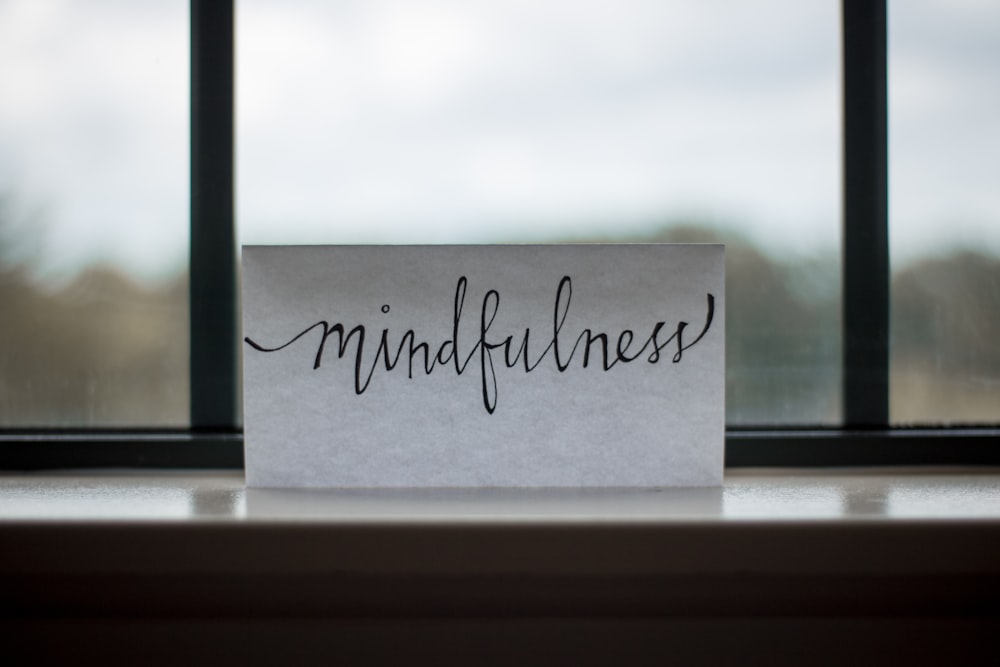Meditation for Seniors

Our modern lives are full of all sorts of stressors and challenges. While many of them gradually fall away as we enter our senior years, growing older also introduces a whole new set of physical and mental challenges as our bodies and minds discover further limitations they never had before. It's easy to become overwhelmed by these changes, like losing touch with the world or even with one's sense of identity.
Over the centuries, cultures and religions from different parts of the world have developed contemplative practices intended to improve individuals' connection with themselves and the world around them. Out of all these practices, one that has proven to be the most applicable to facing the challenges of modern life is the practice of mindfulness.
Mindfulness is not new. In fact, it has been developed ages ago by Hindu and Buddhist practitioners. The practice of mindfulness heavily emphasizes living in the moment while reducing negative thoughts and lessening their power to take over. These principles are powerful tools for improving one's outlook in life, allowing people to enjoy every moment to their fullest extent.
What is mindfulness, and how can it help?
At the core of mindfulness is the concept and practice of silent meditation. Mindfulness practitioners do this by focusing on breathing and body sensations without distractions. As some people believe, the aim is not to have no thoughts, but to be 'mindful' (hence the term mindfulness) in one's thoughts.
While based on a handful of religious traditions, mindfulness is also harmonious with modern scientific knowledge. It makes no appeals to supernatural entities and makes no claims beyond what you can achieve to clear your mind and become aware of your own senses. That means it won't clash with any belief system you might hold and can be integrated into anyone's daily habits.
How to practice mindfulness?
Here are simple ways to practice mindfulness:
1. Check in with your body
Our bodies have certain functions that allow some organs to work involuntarily without us telling them to. For instance, we breathe without telling our lungs to get oxygen in and let carbon dioxide out. Our heart beats continuously and pumps blood in and out of it to keep every cell in our body oxygenated. These bodily functions keep going unless something happens that could make it stop. And usually, when something goes wrong, we become aware when symptoms show up. In some cases however, these symptoms don’t show until it is too late. Which is why it is important for you to be mindful of your body.
Take a moment to check in with your body. Do you feel okay? What do you notice?
Keeping your body in check can help realign your attention to the present and allow you to learn the information you need to better care of your body.
2. Practice gratitude
When we practice gratitude and be thankful, we divert our attention away from what’s negative and focus our attention on what is good and what is positive in our lives. This way, we can bring out the good stuff in the forefront of our mind instead of dwelling on the past or worrying about the future. Remember when they say live in the present moment? Yes, it is another form of mindfulness. By focusing on the positive aspect of life, we can become more available to create a more positive future.
3. Try mind mapping

But first, what is mind mapping?
By definition, mind mapping is a tool to be more aware of your emotions and thoughts. It can help you take an idea and narrow it down to specific ones.
Here's how you do it.
- Get a pen and a piece of clean paper
- Draw a large circle in the centre of the paper but make sure that you have space around the circle.
- Write down a main theme that you want to focus on inside the circle you just drew. For example, you can write down family or health.
- Moving out from the middle, write related topics from your main theme; encircle them and draw a line to connect them to the middle circle. (For instance, if you wrote health as your main theme, you can write exercise, or eat more nutritious food in the small circles).
- Write as many related topics as you can. It may include questions, topics, worries, plans, or questions related to your main theme.
4. Practice mindful eating
Who says being mindful only involves thinking, deep breathing, and relaxing? Because, one can also be mindful when eating.
Most of the time most of us do not pay attention to the food that we eat because we are in a rush or we usually pack our lunch, then eat at our work desk. But, research says that we can also practice mindfulness when eating.
Does it sound a bit confusing? Think of it as this, while you eat, rather than on autopilot, observe how you chew, and pay attention to the moment-by-moment experience of eating. Mindful eating is keeping the present moment awareness of what food you put into your body (including beverages you drink). This involves observing how you feel as you consume food and be aware of the signals that your body sends with regards to how the food tastes and your feelings of satisfaction and fullness.
5. Deep breathing exercises
Deep breathing exercises make you become mindful of your breathing so when you take in air slowly (oxygen) through your nose, oxygen completely fills your lungs.
To perform deep breathing, otherwise known as called diaphragmatic breathing, try the steps below:
- Find a comfortable place to sit in.
- Take a normal breath (inhalation-exhalation) as you normally would.
- After exhaling, take a deep breath and inhale slowly through your nose.
- Feel the air as it enters your nose to your lower belly.
- Allow your abdomen to expand fully.
- After that, exhale through your mouth (or through your nose if it feels better).
Try deep breathing a couple more times. Or if you prefer, you can alternate between deep breathing and normal breathing. Just be sure to be mindful of how you feel as you inhale and exhale. Deep breathing will help you feel relaxed and calm.
Benefits of Mindfulness for Seniors
There are many ways that mindfulness and meditation can benefit seniors. From improving memory to improving digestion, here are some:
Improves memory and cognition
Mindfulness activities like those we discussed have been found to slow down the progression of certain memory-related diseases such as Alzheimer’s and dementia. Although further research is necessary, researchers say that mindfulness can help avoid dysfunction between the brain's synapses, which are the small pockets of space between two cells in our brain. Issues such as dysfunction in these spaces are characteristic of Alzheimer’s Disease.
Moreover, study indicates that mindfulness can also help reduce signs and symptoms of depression caused by memory loss.
Reduces stress
We all experience some sort of stressors in life. And perhaps you have heard before that the most significant advantage of practicing meditation or mindfulness is stress relief. If left untreated, stress can manifest physically and affect heart rate, hypertension, and headaches.
Improves digestion
The stomach may be a few inches away from our brain and yet they are connected. This means that mindfulness can also have an effect on how our gastrointestinal system's processes. Here's how and here's why mindfulness is beneficial to the digestion:
First, let's tackle circulation. Circulation is the movement of our blood through the vessels of our bodies by the pumping action of the heart. This process is essential in digestive function. Through circulation, oxygen can travel to our intestine and stomach; and allow them to perform properly and more effectively.
When you meditate and practice mindfulness, you focus on deep breathing. Deep breathing can increase blood oxygenation; thereby providing the oxygen needed to fuel the cellular processes of the digestive system.
Promotes relaxation and calmness
Many people experience moments where they feel mentally exhausted or stressed out by life's demands that leave them feeling unable to cope with challenges at hand. These feelings aren't exclusive solely to those who are elderly; everyone from children going through puberty up until senior citizens will need ways of decompressing now and then so that we're able keep our sanity intact whilst living within this hectic world which constantly seems intent upon hurling things down.
It is essential for all of us to take a break sometimes and just relax and breathe. Putting aside all worries and taking time to walk outdoors or smell flowers in the garden, or have a nice chat with a loved one can still do wonders for everyone, regardless of age. Spending even an hour every day on mindfulness activities such as meditation and breathing exercises can have profoundly positive effects on both physical and mental health of all ages.
Improves mood
With so many things that are happening around us on a daily basis, it is not uncommon to feel down. Regardless of our age, managing moods and overcoming negative emotions has indeed become a challenge for most of us. Not only that because as we grow older, changes in our physiological process may impact mood and emotional stability which make it even more challenging to manage our responses and reactions. Add those to the stress of adjusting to the decreasing independence, it’s no wonder that aging makes adults experience loneliness.
Mindful meditation, with its focus on relaxation and focusing on the present, allows individuals to observe on thoughts and emotions without being compelled to take immediate action. In fact, evidence says that mindful meditation enhances empathy for self and others as well as promotes positive emotions and outlook in life.
If you are feeling down or just need a mental uplifting, meditation and mindfulness are proven to improve mood. There are many studies that demonstrate the positive impacts of these practices on anyone who tries them; such as helping with anxiety-related disorders like post-traumatic stress disorder, mood-swings, depression, and even chronic pain. Many individuals suffering from insomnia who tried mindful meditation claim to have had improved sleeping patterns. And the best part? It only takes a few minutes a day to practice mindfulness or meditation!
What treatments use mindfulness?
You can find mindfulness resources online and it is available in many different formal treatments.
Acceptance and Commitment Therapy (ACT)
ACT, short for Acceptance and Commitment Therapy, teaches mindfulness skills like meditation which helps individuals to live and behave in a way that’s consistent with one’s personal values. It also helps people develop psychological flexibility —another word for being able to adjust and not be so rigid about what happens or how things should be. Instead, people become more accepting.
According to individuals who tried ACT, they claimed to have been more confident and that they feel freedom after moving on from difficult emotional experiences.
Acceptance and commitment therapy aims to help individuals to recognize ways and address challenges that would have otherwise keep them tied up by past negative experiences.
Watch the video below to know more about the Acceptance and Commitment Therapy:
Cognitive-Behavioural Therapy (CBT)
Cognitive-Behavioural Therapy (CBT) assists individuals to develop skills and strategies to become healthy and stay healthy in the present moment. It helps in examining how day-to-day problems affect one’s feelings.
In CBT, clients learn how to identify, evaluate, and change attitudes, beliefs, and thoughts related to behavioural and emotional reactions that cause issues or difficulties in life.
It may be a good option for therapy if you are interested in practicing or learning change strategies or practical skills to consolidate improvement and manage your day-to-day life. Read more about Cognitive Behavioral Therapy here or watch the video below:
Dialectical Behaviour Therapy (DBT)
Dialectical Behaviour Therapy, or DBT for short, is an evidence-based model of therapy that aims to assist people in learning and using new skills or strategies to build lives worth living.
DBT is different from cognitive behavioural therapy (CBT) in terms of therapeutic focus. It focuses on the emotional and social aspects of living. It was created to help people manage intense emotions.
CBT primarily teaches techniques for changing thoughts and behaviors. DBT, which is based on CBT, tries to teach acceptance as well - which often proves more helpful than trying to change everything at once.
Watch the video below to know more about the Dialectical Behaviour Therapy (DBT):
Mindfulness-Based Cognitive Therapy (MBCT)
MBCT is a type of psychotherapy that combines cognitive therapy, meditation and the cultivation of present-oriented non-judgmental attitudes called mindfulness. It utilizes various techniques and exercises such as:
Mindful breathing - involves being aware and focusing on breathing to calm the mind body and spirit with each inhalation and exhalation. Each inhale exhale breathing should last for at least five seconds to fully expand lungs.
Meditation - a practice which can be guided or self-directed to gain better awareness of thought, body, and breathing.
Yoga - which may involve different yoga poses to help facilitate mindful stretching.
Body scan exercise - involves lying down to bring attention and awareness to the body. It is a good way to release tension by paying attention by examining your body from head to toe.
Other mindfulness practices - any activity that can promote awareness of the present moment.
Watch the video below to know more about the Mindfulness-Based Cognitive Therapy (MBCT):
Mindfulness-Based Stress Reduction (MBSR)
MBSR is a group program developed by professionals at University of Massachusetts in 1979. It is intended not just those who are stressed, but even to individuals who are generally healthy. It involves daily home practice tasks to enable individuals to learn how to manage stress more skillfully. Watch the video below to know more about the Mindfulness-Based Stress Reduction (MBSR) technique.
Talk to your mental health care team about how you feel, they will be able to help you decide if this type of treatment would work for you!
Get to know more
Want to learn more about mindfulness and how it changes our emotions? Watch the video below:
Resources for getting started with your mindfulness journey
There are several organizations that can help you with your mindfulness journey. Check recommendations from your community center, community organizations, local schools, and the Canadian Mental Health Association.
Canadian Mental Health Association
The Canadian Mental Health Association is the most established, extensive community mental health organization in Canada. They provide advocacy through their presence of more than 330 communities across every province and one territory- all to help prevent mental health concerns and promote resilience by supporting recovery from such conditions. They provide advocacy, programs and resources to help prevent mental health problems in Canada. CMHA has touched the lives of more than 330 communities across every province and one territory through their presence.Read Canadian Mental Health Association’s article on mindfulness here.
Your Community Centre
Community centres on some Canadian provinces offer evidence-based mindfulness programs and training. Some programs even include various types of therapies which utilize mindfulness for individuals or groups.
Local Schools Near You
Some schools, colleges, and universities offer free or paid mindfulness programs to improve individual lives and promote organizational effectiveness. Call or visit schools near you and ask for mindfulness events free or open to the public.
Various organizations
If you search mindfulness online, you can see various organizations or NGOs that give training either on-site, online, or blended learning (mixed online and in-person). You can also find videos from certain online platforms like youtube or apps that you can download to your mobile devices. These sites or apps offer videos and guided activities for mindfulness training.
Try meditation and mindfulness
Meditation and mindfulness may sound difficult, but it’s an activity that can be practiced and learned by anyone. In addition to the benefits that we have mentioned above, there are other benefits that mindfulness and meditation can offer.
If you find yourself having trouble sleeping or feeling anxious or stressed often, consider trying out the mindful meditation techniques and tips we laid out on this article today!
If you have tried all of it and you want to look for more guidance on how to continue with meditation—worry not; you can check our other blog posts and subscribe to our newsletter. We have plenty of tips and resources which hopefully could help you in your journey to be mindful over time.
We hope that what we shared in this article has helped answer your questions on meditation and have guided you about mindfulness. Our last tip for the day—You can do it!




